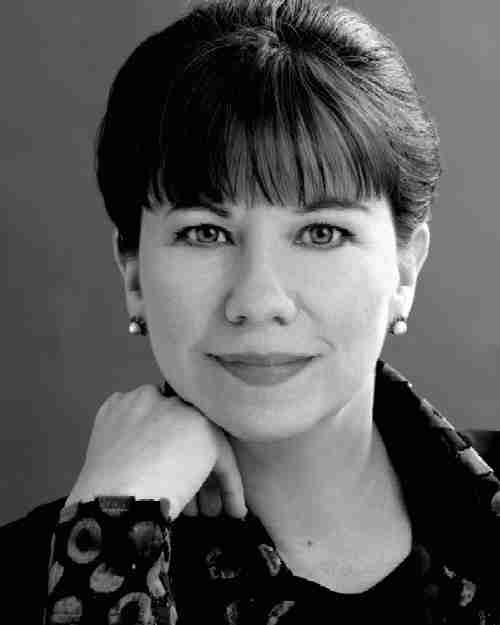
T he traditional configuration of the keyboard—its arrangement of black and white keys—has had a largely unrecognized influence on the history of harmony, because of most composers’ dependence on the piano for inspiration, an influence that may perhaps not be considered entirely benign... Playing a melody in C major feels very different under the hand from playing it in [all black keys— ] F-sharp major. We are physically in a different realm.”
— Charles Rosen, Piano Notes, p. 229.
D ebussy’s music is different from any other. It was a leap into a new region of art. It is like the music of another planet.”
— Claudio Arrau, in Dubal, p. 14.
A t the heart of Romanticism lies transformation, a magic act conferring promethean powers on the artist.”Terry Eder delivered a wonderful, inspired-and-inspiring recital last night at Zankel Hall. The thoughtful program was comprised of innovative romantic works. Each one in its day precipitated innovations in piano technic.
— Benita Eisler, Chopin’s Funeral, p. 120.
- Chopin—Barcarolle in F-sharp, Op. 60
- Messiaen—Prelude: Chant d’extase dans un paysage triste
- Beethoven—Sonata No. 32 in c minor, Op. 111
- Bartók—Mikrokosmos 6, Nos. 148-153 (Six Dances in Bulgarian Rhythm); Sonatina; Three Folksongs from the Csík District
- Debussy—Estampes; l’Isle joyeuse
In a moderate 6/8 or 12/8 meter (lilting; waltz-like triplets), the title ‘barcarolle’ (boating song) was used for many character pieces, by various Romantic composers. The ephemeral, liminal effects evoked in Op. 60 are informed by the hopes and dreams of the tubercular Chopin, who was within 3 years of his death at 39 and in the midst of ongoing difficulties with his lover, George Sand, at the time this piece was composed. One of Chopin’s last works, Barcarolle in Eder’s hands is laden with the passion that the piece demands. Eder’s light, dry pedal technique kept the gunwales well above the waterline.
The right-hand enjoys considerable independence from the left-hand, which Eder manages with ease. The pulse in the left-hand cannot be resisted by the right forever, though—the effect is evocative of small ‘eddies’ in the margins of a serene river. Particles caught up in an eddy may circulate for awhile but are eventually compelled to continue the course downstream, captured by current/hypermeter with a longer timescale than the activity in the eddy. With Eder as the boatman at the helm, this piece ‘pushes off’ not for a round-trip boatride in the present but instead a transformative one-way adventure into the future. River of no return, such is Life. Last night’s performance by Eder is the first time I have imagined that this is what Chopin may really have intended to say in this piece—in effect a much ‘darker’, ‘realist’ breed of Romanticism than Barcarolle is normally given credit for.
The Debussy l’Isle joyeuse, composed in 1903, was superb. One of its inspirations was Antoine Watteau’s (1684-1721) painting, L’embarquement pour Cythère. But Debussy eloped with his mistress, Emma Bardac, to Jersey in 1904, and he revised this piece after that visit—so it’s likely that this is more autobiographical essay than arms-length character piece. The piece’s close correspondence to D’un cahier d’esquisses has also been pointed out. The two pieces are sometimes performed as a single lyrical work, without a break (or even lifting the pedal) between them—much as Chopin’s Barcarolle is often played back-to-back with Berceuse.
Eder’s account of the Bartók was admirable for its coloristic depth, pensiveness—phlegmatic, festinating bagpipers and all. Her treatment of Messiaen yielded a fatalism that was fascinating for its existential qualities—despondency that still has energy to speak with friends and friends still gathered around with whom to speak; youthful ‘tristesse’ that gives way to a growing-up and taking measure of what one has learned; newly-attained worldliness that is not endangered or ‘damaged goods’. Eder’s topicality is genuine and persuasive.
Terry Eder made her Lincoln Center recital debut in April, 2006. She was a Recipient of Artists International’s Outstanding Alumni-Winners Award in Piano. She received her Bachelor of Music degree from Oberlin Conservatory and her Master of Music degree from Indiana University at Bloomington. She served one year residencies at the Franz Liszt Academy in Budapest (under the guidance of acclaimed pianist and conductor, Zoltán Kocsis, where she also learned to speak Hungarian) and at the Banff Centre in Alberta. Ms. Eder is a practicing lawyer with special interests in international human rights practice. She received her J.D. from Fordham Law School in 1999. (As a musician-lawyer, she follows in the footsteps of such other musicians as Telemann, Tartini, Marcello, Schumann, Tchaikovsky, and Stravinsky, each of whom studied law.)
Eder’s wonderful piano performance makes one yearn for lawyering so skillful and committed and storied as this. Eder lives with her architect-husband and their daughter in an 1861 brownstone in New York City.

- Eder-Kaufman T. Balancing personal and professional life. Fordham University School of Law, 21-MAR-2006.
- Dubal D. The Art of the Piano. 3e. Amadeus, 2005.
- Eigeldinger J-J, ed. Chopin: Pianist and Teacher as Seen by his Pupils. Cambridge Univ, 1989.
- Eisler B. Chopin's Funeral. Vintage, 2004.
- Rosen C. Piano Notes: The World of the Pianist. Free Press, 2004.
- Chopin Foundation of the U.S.
- Greenberg Traurig website

No comments:
Post a Comment